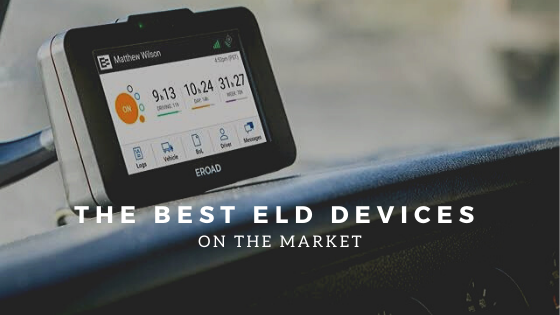Anyone involved in trucking or the operation of commercial vehicles will be aware of the significant changes that are required very soon. As of December 16th, 2019, all vehicles that are currently subject to federal hours of service regulations in the US – that is those that are currently legally obliged to provide Record of Duty Status (RODS) information – are required by law to have fitted an Electronic Logging Device (ELD) that complies with the relevant regulations.
What does this mean to fleet operators and truckers? The additional expense is the initial thought, but the fact is the new type of device should make it much easier for fleet managers to keep track of the hours that drivers have undertaken, and much more besides. Take note that the directive applies to buses and all other commercially operated vehicles, too.
What is an ELD device, and how do you go about choosing one that is right for you? Given the massive market that the ELD Mandate has opened up, there is plenty of choices, and you might find it confusing to settle on one. Before we give you some tips on choosing the right ELD, let’s talk in more detail about what an ELD is, the information it is required to provide, and what the benefits are to you, and see if we can single out the best ELD devices available.
What is an ELD?
Electronic Logging Devices are explicitly designed to provide precise and accurate real-time information regarding the operation of trucks and other commercial vehicles. In the USA, there are strict rules and regulations about the number of hours a driver can be at work before he or she has to rest. Currently, many fleets use paper-based logging systems that are sufficient, but perhaps susceptible to error.
The ELD works by keeping a check on the engine of the vehicle. It will keep track of whether the engine is running or not, how long it has been running for, and also accurately pinpoint the location of the vehicle at any one time. The benefits for fleet operators are, therefore, many: in an instance, a fleet manager can see where each vehicle is, whether it is on its correct course or not, how long the driver has been active or otherwise, and when the vehicle last moved.
These are the basic functions: some more sophisticated models also offer information on fuel usage and other useful data that can be of help back at base. Choosing the right ELD for you means looking in detail at many of the models available, and we recommend you set aside some time to research the different models – and especially the very varied pricing plans that may also serve to confuse.
What Do I Need?
The ELD Mandate is mainly concerned with the hours that a vehicle is in use, especially by one driver. There is a specific breakpoint where drivers are required to take a break of a set number of hours or hand over to another driver. You need an ELD that can provide you with this information, with the engine usage data, and with the location information. It must also accurately log the driver’s shift on and off times. Any further functions may be beneficial but are not strictly necessary, and nor are they mandated.
For large fleets, the best options may be an ELD that is paid for with a one-off up-front fee. Many charge by the month – and by the truck – which can be expensive for bigger fleets, but maybe the best way to go for a solo trucker or small commercial operator.
The price varies greatly across the board, too: one model – from Omnitracs – offers a wide variety of functions and a large screen, and costs (at the time of writing) $199 upfront, plus an extra $25 for each truck registered. Another, the DashLink from BigRoad, is designed for smaller fleets and comes at a simple price of $19.50 per month, with no hardware costs involved.
Have a closer look at the best models out there, and you’ll find that there is a world of choice, but make sure you have your vehicles kitted out by December 16th, a date you need to put on your calendar in red!
